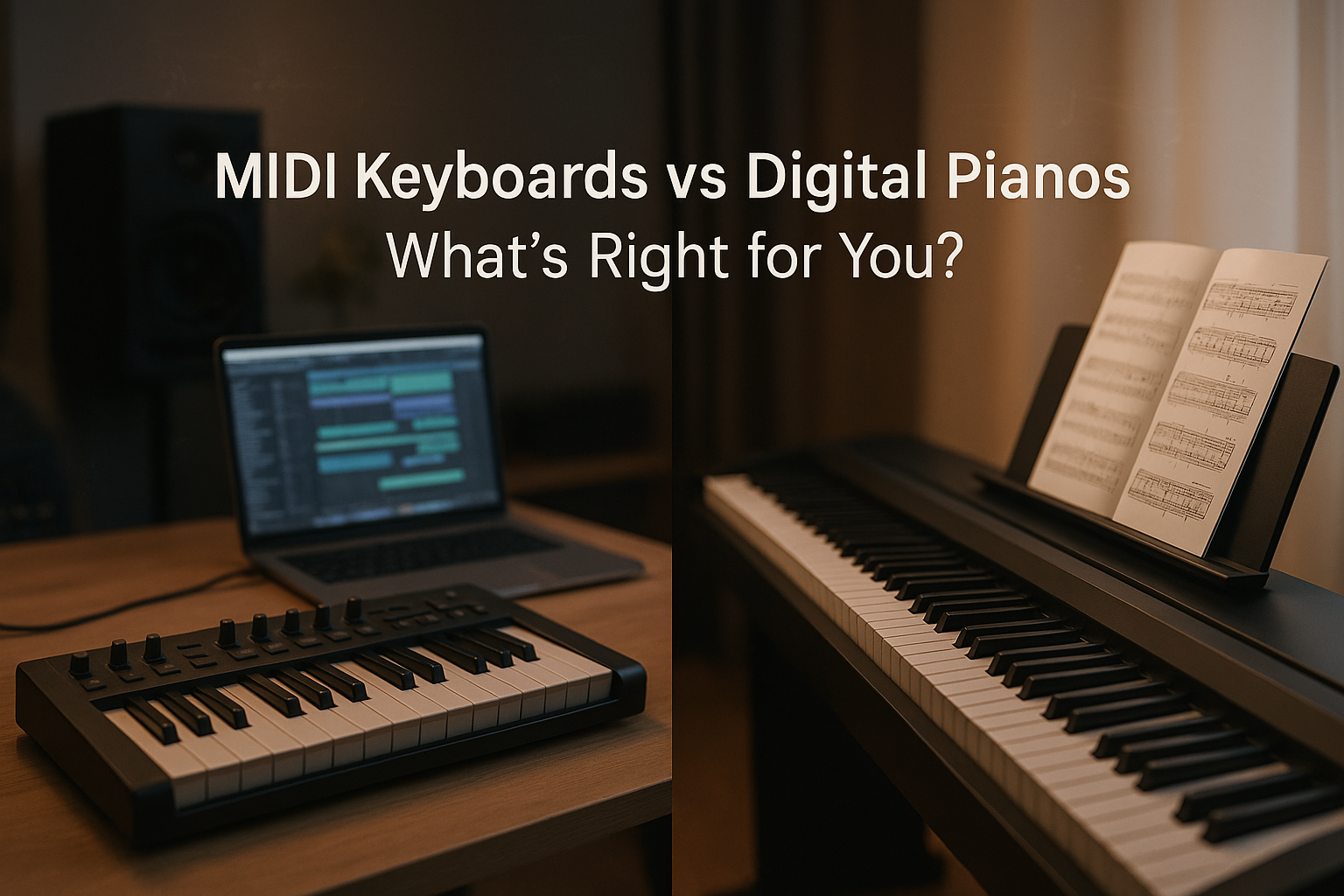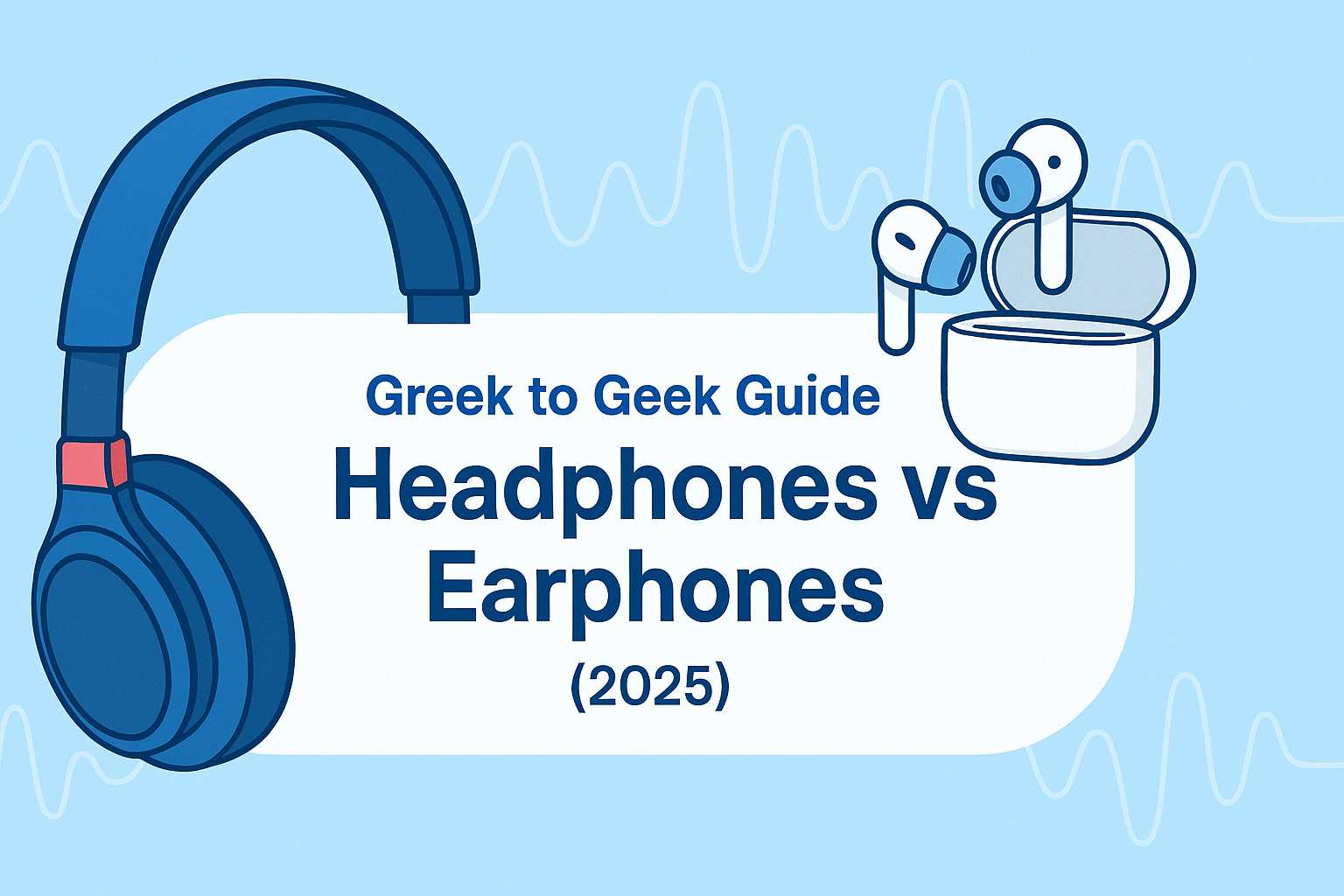Greek to Geek: Headphones vs Earphones Explained (2025 Buyer’s Guide)
Buying a good pair of headphones can feel like decoding Greek. Reviews are packed with jargon—frequency response, impedance, balanced armatures—and half the time you’re left wondering whether you’re shopping for headphones or signing up for a physics exam. The truth is: choosing between headphones and earphones isn’t just about brand names or fancy specs. It’s about matching your lifestyle, comfort needs, and listening habits with the right type of gear.
As an audio engineer with over 10 years in the music industry, I’ve worked in recording studios, toured with live acts, and tested everything from budget ₹800 earbuds to ₹2,00,000 reference headphones. This guide distills that experience into a plain-English breakdown—a “Greek to Geek” translation—to help you make smarter decisions.
Headphones vs Earphones – The Big Picture

Comfort & Portability
- Headphones (over-ear & on-ear): Immersive for long sessions and home/studio setups, but bulkier.
- Earphones (IEMs & TWS): Tiny, lightweight, pocket-friendly—ideal for commuting, workouts, and casual listening.
Sound Quality
- Headphones: Larger drivers deliver fuller bass, broader soundstage, and more “room-filling” sound.
- Earphones: Modern in-ear monitors (IEMs) and true wireless (TWS) now rival mid-range headphones in clarity and detail.
Pro tip: If portability is your top priority, pick earphones. If immersive sound matters most, headphones usually give you more bang for your buck.
Types of Headphones & Earphones

Nearly every product fits into one of these four categories. Use the quick table, then read the notes below.
| Type | Best For | Pros | Trade-offs |
|---|---|---|---|
| Over-Ear (Circumaural) | Home/studio, long sessions | Immersive, great isolation, big soundstage | Bulky, can trap heat |
| On-Ear (Supra-aural) | Office/casual listening | Lighter, more compact | Leaks sound, less isolation |
| In-Ear Monitors (IEMs) | Musicians, detail lovers | Highly detailed, stage-ready | Can feel intrusive over time |
| True Wireless (TWS) | Commuting, workouts, travel | Cable-free, ANC & smart features | Battery-dependent, easy to misplace |
Over-Ear: Immersive sound and comfort. Example: Sennheiser HD 660S2.
On-Ear: Lighter footprint for desks and travel. Example: JBL on-ear series.
IEMs: Precision and isolation—favored on stage. Example: Shure SE846.
TWS: Pocketable convenience, often with ANC and app EQ. Example: Apple AirPods Pro (2nd gen).
Closed-Back vs Open-Back Headphones

Closed-Back
- Pros: Better bass slam, blocks external noise.
- Best for: Commuting, gaming, tracking in studios.
- Example: Audio-Technica ATH-M50x.
Open-Back
- Pros: Airy, wide, natural soundstage.
- Trade-off: Leaks sound; not ideal in noisy environments.
- Example: Beyerdynamic DT 1990 Pro.
Think of closed-back as a private concert and open-back as a front-row seat at a live performance.
Noise Isolation vs Active Noise Cancellation (ANC)

Passive Isolation
- Seals your ears physically; no batteries required.
- Custom-molded IEMs offer excellent isolation.
Active Noise Cancellation
- Microphones + inverse sound waves reduce ambient noise.
- Requires power; can slightly alter tonality for purists.
- Great for flights and metros. Example: Bose QC Ultra.
Drivers That Power Your Sound (Dynamic vs Balanced Armature)

Dynamic Drivers
- Pros: Punchy bass, durable, affordable.
- Consider: Can sound muddy at high volumes.
- Example: Sony MDR-XB series.
Balanced Armature Drivers
- Pros: Excellent detail, clarity, imaging.
- Consider: Bass is less “slammy”; often pricier.
- Example: Campfire Audio Andromeda.
Technical Specs Simplified

- Frequency Response: Human hearing is ~20Hz–20kHz. Claims beyond this are often marketing fluff.
- Impedance: Low (16–32Ω) works with phones/laptops; high (100–600Ω) often needs an amp but offers consistent performance.
- Sensitivity & SPL: Higher sensitivity = louder at the same input power.
- THD (Total Harmonic Distortion): Lower is better; <1% is fine, audiophiles aim for <0.1%.
Don’t get stuck in numbers—your ears are the final judge. Use specs to shortlist, then listen to confirm.
Conclusion: Find the Right Fit for You
- Portability & convenience? True Wireless Earbuds.
- Accuracy for production? Studio Headphones.
- Immersive, natural sound? Open-Back Headphones.
- Frequent travel? ANC Headphones.
Still unsure? Our experts can help you match your playlist, device, and budget to the right gear.
Helpful BAJAAO Links
References & Further Reading
- IEEE: Studies on Active Noise Control
- Audio Engineering Society (AES) Library
- WHO: Safe Listening Guidelines
- Head-Fi: Community Measurements & Reviews
- RTINGS: Independent Headphone Tests
- SoundGuys: Technical Explainers
- What Hi-Fi?: Reviews & Buying Advice
- Papers on Acoustics & Wave Physics
- ISO 226: Equal-Loudness Contours
- Counterpoint Research: India TWS Market Trends




Share:
Dreadnought vs Concert vs Jumbo: Guitar Body Shape Differences
MIDI Keyboards vs Digital Pianos: What’s Right for You?